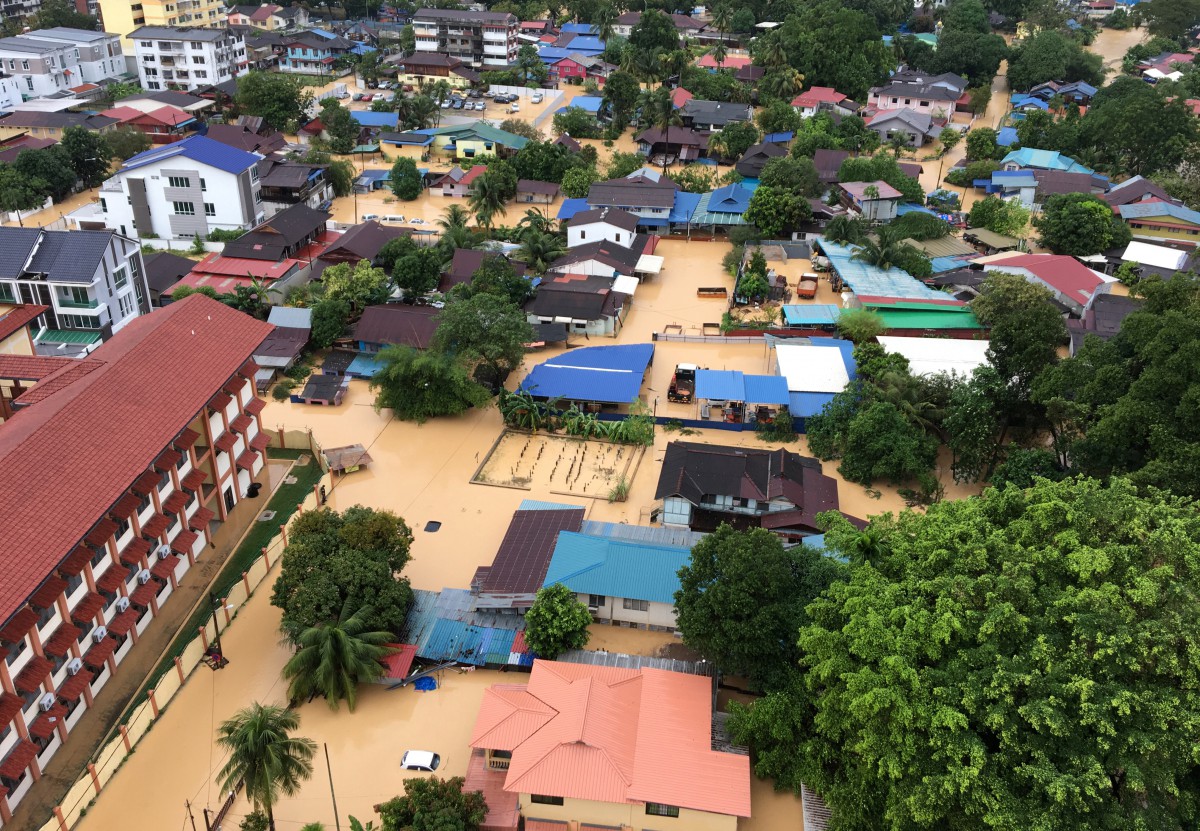“It all ties up to climate change. The warmer the Earth is, the more water it absorbs. This means the heavier rain,” Wan Junaidi said in a press conference in Kuala Lumpur today.
“Climate change is real. Thousands of scientists believe in it, only a few in America do not.”
 A flooded residential area in George Town. Source: Reuters
A flooded residential area in George Town. Source: Reuters
As many as 46 evacuation centers have been set up in Penang to house 1,731 families and around 5000 victims. In Kedah, 41 evacuation centers have been set up for 972 families and 3812 victims.
Malaysia has allocated around RM40 billion to respond to the weather changes brought by climate change. Several initiatives, such as to cut harmful gas emissions by 2035, have been taken in pursuit of this, the minister added.
Penang usually experiences monsoon rains in October and November, but last weekend’s rain was an aberration causing the water level to rise to unprecedented levels, for which the states’ outdated flood mitigation system was unable to cope with as it was built without taking into consideration the effects of climate change.
“Now we need to relook into the whole thing because of what happened in Penang,” Wan Junaidi told reporters after a briefing by the National Irrigation Department here.
Being an island, Penang’s flood problem is unique compared to other flood-prone states in the country. And with rapid development taking place within the island state, its existing drainage system, both natural and engineered, was unable to cope with the unexpected deluge of rainfall, according to the minister.
“When the water level goes up and you’re surrounded by the sea where do you drain the water to?” the minister said.
The federal government will be spending RM4.3 billion (US$1.01 billion) in the coming months to mitigate floods across the country.
The Malaysian Insight reports that the Penang state government had committed RM30 million (US$7.07 million) to 10 flood-mitigation projects from the middle of 2017.
Malaysia’s Northeastern states, Kelantan and Terengganu, usually receive heavier downpour and floods during the monsoon season than its Northwestern states, Penang, Kedahand Perlis.
The country’s worst floods in a decade happened in 2014 at Kelantan and Terengganu, when “exceptionally high” water levels cut off rescuers from relief centers and killed at least 21.
Source: Asian Correspondent | 6 November 2017














